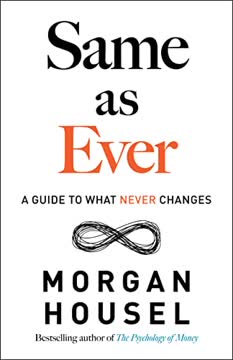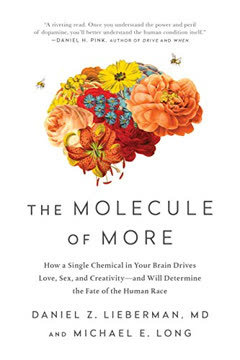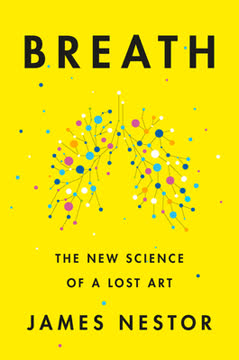가지 주요 요점
1. 노화는 삶의 불가피한 과정이 아니라 치료 가능한 질병이다
노화란, 간단히 말해 정보의 손실이다.
패러다임의 전환. 노화를 피할 수 없는 쇠퇴로 보는 기존의 관점은 과학적 발견에 의해 도전받고 있다. 노화는 질병의 특징을 지닌다. 삶의 질을 제한하고, 특정한 병리학적 양상을 보이며, 신체적·인지적 기능에 영향을 미친다. 다른 질병과 달리 노화는 모두에게 나타나기 때문에 역사적으로 질병으로 분류되지 않았다. 그러나 연구가 노화의 근본 메커니즘을 밝혀내면서 이 관점은 변화하고 있다.
치료 가능한 상태. 노화를 치료 가능한 상태로 인식하면 연구와 개입의 새로운 길이 열린다. 개별적인 연령 관련 질병이 아니라 노화의 근본 원인을 겨냥함으로써 다양한 건강 문제를 동시에 예방하거나 지연시킬 수 있다. 이러한 접근은 증상 치료에서 벗어나 전 생애에 걸쳐 건강과 활력을 유지하는 방향으로 의료 패러다임을 혁신할 수 있다.
2. 노화의 정보 이론: 후생유전 정보의 손실이 노화를 촉진한다
생물학적, 화학적, 물리적 법칙 중에 우리가 반드시 나이를 먹어야 한다고 말하는 것은 없다.
후생유전적 잡음. 노화의 정보 이론은 시간이 지남에 따라 후생유전 정보가 손실되면서 노화가 발생한다고 본다. 이 손실은 세포 기능 장애와 노화의 다양한 특징을 초래한다. 유전 정보는 대체로 평생 유지되지만, 후생유전 정보는 훨씬 더 쉽게 손상된다.
생존 회로. 이 이론은 수십억 년 전 진화한 고대 세포 생존 메커니즘에 뿌리를 두고 있다. 세포가 스트레스나 DNA 손상을 겪으면 시르투인 같은 후생유전 조절자가 손상 복구에 동원된다. 그러나 이 과정은 시간이 지나면서 후생유전적 변화와 세포 정체성 상실을 초래할 수 있다. 이 메커니즘을 이해하면 후생유전 정보를 유지하거나 복원하는 개입법을 개발할 수 있는 틀을 제공하며, 노화의 일부 측면을 늦추거나 되돌릴 가능성을 열어준다.
3. 생활습관 개입은 장수 유전자를 활성화하고 노화를 늦출 수 있다
식사 횟수를 줄여라.
칼로리 제한. 영양 결핍 없이 칼로리 섭취를 제한하는 것은 수명을 연장하는 가장 확립된 방법 중 하나다. 이 방법은 장수 유전자와 세포 복구 메커니즘을 활성화한다. 다만 엄격한 칼로리 제한은 장기적으로 유지하기 어렵다.
실용적 접근법:
- 간헐적 단식: 식사 시간을 특정 시간대로 제한
- 운동: 특히 고강도 인터벌 트레이닝을 포함한 규칙적인 신체 활동
- 냉온 노출: 짧은 시간의 냉기 자극이 갈색 지방과 장수 경로를 활성화
- 식물 기반 식단: 동물성 단백질 섭취를 줄이고 식물성 영양소 중심으로 식사
이러한 생활습관은 칼로리 제한의 일부 효과를 모방하며, 극단적인 식이 제한 없이도 유사한 장수 경로를 활성화할 수 있다.
4. 신약 개발이 건강수명과 수명 연장에 희망을 보여준다
더 오래 사는 것뿐 아니라 더 건강하고 활기차며 행복한 삶을 누리는 시대가 다가오고 있다. 대부분 예상보다 훨씬 빠르게.
라파마이신과 메트포르민. 원래 다른 목적으로 개발된 이 약물들은 동물 실험에서 수명과 건강수명 연장 가능성을 보여주었다. 라파마이신은 mTOR 경로를 억제하고, 메트포르민은 AMPK를 활성화하는데, 두 경로 모두 세포 에너지 조절과 장수에 관여한다.
NAD 증강제. NMN(니코틴아마이드 모노뉴클레오타이드)과 NR(니코틴아마이드 리보사이드) 같은 화합물은 세포 에너지 생산과 시르투인 활성에 필수적인 NAD 수치를 높인다. 동물 실험에서 건강 개선과 수명 연장에 긍정적인 결과를 보였다.
세놀리틱스. 노화와 함께 축적되어 염증과 조직 기능 저하를 일으키는 노쇠 세포를 제거하는 약물이다. 동물 모델에서 이 세포를 제거하면 건강이 크게 개선되고 수명이 연장되는 효과가 나타났다.
5. 세포 재프로그래밍은 노화를 되돌리고 조직을 재생할 수 있다
우리는 쥐들에게 모든 질병을 준 것이 아니다. 노화를 준 것이다.
야마나카 인자. 시냐 야마나카가 발견한 세포 재프로그래밍 인자는 세포 수준에서 노화를 되돌릴 수 있는 가능성을 열었다. 이 인자들은 세포의 후생유전 상태를 초기화하여 젊은 기능을 회복시킬 수 있다.
부분 재프로그래밍. 최근 연구는 신중하게 조절된 부분 재프로그래밍이 세포와 조직을 젊게 만들면서도 세포 정체성을 잃지 않도록 할 수 있음을 보여주었다. 이 방법은 동물 모델에서 다음과 같은 건강 개선 효과를 입증했다.
- 손상된 조직 재생
- 장기 기능 향상
- 노화의 일부 측면 역전
아직 초기 단계지만, 이 기술은 재생 의학과 노화 관련 질병 치료에 큰 희망을 준다.
6. 연장된 활력은 사회, 경제, 인간 잠재력을 재구성할 것이다
당신은 그 시간을 어떻게 보내고 싶은가? 우리는 결국 디스토피아적 파멸로 가는 위험한 길을 따를 것인가? 아니면 상상 이상의 이상향을 함께 만들어낼 것인가?
사회적 영향. 건강수명의 연장은 삶, 경력, 사회 구조를 근본적으로 바꿀 것이다. 은퇴, 교육, 노동에 대한 전통적 개념을 재고하여 더 길고 건강한 삶에 맞춰야 한다.
경제적 함의:
- 연령 관련 질병이 지연되거나 예방되어 의료비용 감소
- 건강하고 활발한 인구 증가로 생산성 향상
- 장수 관련 산업과 일자리 창출
인간 잠재력. 건강한 시간이 늘어나면서 개인은 자기계발, 학습, 성취의 기회를 더 많이 갖게 된다. 경험 많은 이들이 사회에 계속 기여함으로써 과학과 문화가 가속적으로 발전할 수 있다.
7. 수명 연장에 따른 윤리적 고려와 사회적 적응이 필수적이다
우리는 그것이 가능하도록 문화적, 윤리적, 법적 원칙을 개발하는 과정을 시작해야 한다.
윤리적 도전. 수명 연장은 사회가 해결해야 할 여러 윤리적 문제를 제기한다.
- 생명 연장 기술에 대한 공평한 접근성
- 인구 과잉과 자원 배분 문제
- 자신의 삶을 마감할 권리
- 세대 간 형평성과 권력 관계
사회적 적응. 건강수명의 혜택을 온전히 누리려면 사회는 다음과 같이 적응해야 한다.
- 사회보장과 의료 시스템 개혁
- 평생 교육의 재구성
- 새로운 노동과 은퇴 모델 개발
- 지속 가능한 미래를 위한 환경 문제 해결
이러한 도전을 선제적으로 해결하고 제도를 적응시키는 것이 연장된 수명 시대의 긍정적 미래를 만드는 열쇠다.
마지막 업데이트 날짜:
FAQ
What's Lifespan: Why We Age – and Why We Don’t Have To about?
- Exploration of Aging: The book explores the biological mechanisms of aging, presenting it as a disease that can be treated rather than an inevitable process.
- Information Theory of Aging: David A. Sinclair introduces the Information Theory of Aging, suggesting that aging results from a loss of biological information, particularly at the epigenetic level.
- Practical Interventions: It outlines interventions like dietary changes, exercise, and compounds such as NAD boosters that can potentially slow or reverse aging.
Why should I read Lifespan: Why We Age – and Why We Don’t Have To?
- Cutting-Edge Research: The book presents groundbreaking research in the field of aging, making it essential for those interested in health and longevity.
- Empowering Perspective: Sinclair offers a hopeful message that aging can be managed and even reversed, challenging traditional views.
- Practical Advice: Readers receive actionable advice on lifestyle changes that can enhance longevity, including dietary practices and exercise regimens.
What are the key takeaways of Lifespan: Why We Age – and Why We Don’t Have To?
- Aging as a Disease: Sinclair argues that aging should be viewed as a treatable disease, opening new avenues for research and intervention.
- Role of Sirtuins: The book highlights the importance of sirtuins, proteins that regulate cellular health and longevity, and how activating them can combat aging.
- NAD and Longevity: Sinclair discusses the significance of NAD in cellular processes and its decline with age, suggesting that boosting NAD levels can promote healthier aging.
What is the Information Theory of Aging in Lifespan?
- Loss of Information: The theory posits that aging is caused by a loss of biological information, particularly at the epigenetic level, leading to cellular dysfunction.
- Epigenetic Changes: Sinclair explains that chaotic epigenetic changes contribute to aging, and maintaining epigenome stability is crucial for healthy aging.
- Potential for Reversal: By restoring lost information and stabilizing the epigenome, aspects of aging may be reversible, opening possibilities for new treatments.
What are sirtuins, and why are they important in Lifespan?
- Key Proteins for Longevity: Sirtuins are proteins that regulate cellular processes, including DNA repair and metabolism, playing a critical role in promoting longevity.
- Activation Mechanisms: They can be activated through caloric restriction, exercise, and compounds like resveratrol, enhancing the body's ability to repair damage.
- Impact on Aging: Sirtuin activity declines with age, contributing to aging, but boosting their activity can potentially slow or reverse aging effects.
What role does NAD play in aging according to Lifespan?
- Essential Coenzyme: NAD is crucial for energy metabolism and cellular repair, with levels declining as we age, impacting overall health.
- Boosting NAD Levels: Sinclair emphasizes maintaining NAD levels through diet, exercise, and supplements like NMN, which can enhance sirtuin activity.
- Health Benefits: Increasing NAD levels improves health markers, including metabolic health and cognitive function, promoting healthier aging.
What specific methods does David A. Sinclair recommend for extending lifespan in Lifespan?
- Caloric Restriction: Sinclair advocates for reducing caloric intake without malnutrition to activate longevity genes and improve health.
- Intermittent Fasting: This approach mimics caloric restriction effects, activating survival circuits and promoting cellular repair.
- Exercise: Regular physical activity is essential for maintaining health and longevity, activating longevity genes and improving well-being.
How does Lifespan address the concept of senescence?
- Definition of Senescence: Senescent cells, or "zombie cells," no longer divide but cause inflammation and tissue damage, accumulating with age.
- Senolytics: The book discusses senolytic drugs that aim to eliminate senescent cells, improving health and extending lifespan in models.
- Impact on Aging: Targeting senescence is crucial for combating aging, as reducing senescent cells can enhance health and vitality.
What lifestyle changes does Lifespan recommend for longevity?
- Intermittent Fasting: Sinclair advocates for fasting to activate cellular repair processes and enhance autophagy, cleaning out damaged cells.
- Exercise: Regular physical activity, including high-intensity interval training, is emphasized for maintaining health and extending lifespan.
- Dietary Adjustments: A diet rich in plant-based foods and low in processed sugars is recommended to support sirtuin activity and cellular health.
What is the significance of mTOR inhibition in Lifespan?
- mTOR's Role in Aging: Overactivation of mTOR is linked to aging and age-related diseases, making it a target for longevity interventions.
- mTOR Inhibitors: Compounds like rapamycin mimic caloric restriction effects, potentially extending lifespan by enhancing autophagy.
- Health Benefits: Inhibiting mTOR may improve cellular health and lead to better health outcomes as we age.
How does Lifespan view the future of aging research?
- Optimistic Outlook: Sinclair is confident that advancements in aging research will lead to significant breakthroughs in extending healthy life.
- Interdisciplinary Collaboration: Collaboration across scientific fields is crucial for tackling aging complexities, integrating genetics, biology, and medicine.
- Ethical Considerations: Sinclair urges society to consider the ethical implications of extending life, advocating for responsible research benefiting all humanity.
What are the challenges in aging research discussed in Lifespan?
- Funding Limitations: Aging research often receives less funding compared to specific diseases, necessitating increased investment in understanding aging.
- Public Perception: Societal attitudes towards aging can hinder research progress and acceptance of new therapies, requiring a narrative shift.
- Regulatory Hurdles: Current regulatory frameworks may not recognize aging as a disease, posing challenges for developing anti-aging therapies.
리뷰
『Lifespan』은 평점이 2점에서 5점까지 다양하게 나뉘며 엇갈린 평가를 받고 있다. 많은 독자들은 노화와 장수에 관한 과학적 내용에 흥미를 느끼며, 싱클레어의 낙관적인 시각과 혁신적인 연구를 높이 평가한다. 반면, 일부는 이 책이 지나치게 추측에 의존하고 자기 홍보에 치중했으며, 특정 부분에서는 깊이가 부족하다고 비판한다. 건강 수명을 연장하는 실용적인 조언에 대해서는 긍정적인 반응이 많지만, 사회적 함의에 대해서는 의견이 분분하다. 전반적으로 이 책은 노화 역전 가능성에 관한 주장으로 인해 논란을 일으키면서도 깊은 생각을 자아내는 작품으로 평가받는다.
Similar Books














